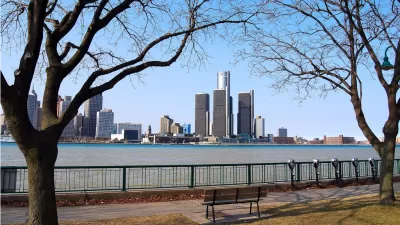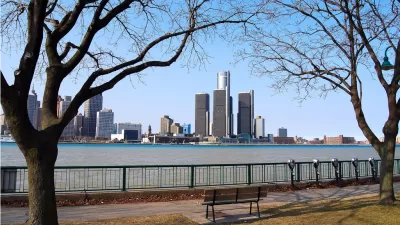The story of how Detroit became the largest US city to ever file for bankruptcy is a long and tangled one featuring many villains and several "if only" moments. The Detroit Free Press reviews 50+ years of financial history to set the record straight.
"An in-depth Free Press analysis of the city’s financial history back to the 1950s shows that [Detroit's] elected officials and others charged with managing its finances repeatedly failed — or refused — to make the tough economic and political decisions that might have saved the city from financial ruin," find Nathan Bomey and John Gallagher's in their lengthy investigative report on the city's path to insolvency. Their reporting reveals several surprises, including villains absolved and supposed good actions condemned.
"The numbers, most from records deeply buried in the public library, lay waste to misconceptions about the roots of Detroit’s economic crisis. For critics who want to blame Mayor Coleman Young for starting this mess, think again," they write. "And Wall Street types who applauded Mayor Kwame Kilpatrick’s financial acumen following his 2005 deal to restructure city pension debt should consider this: The numbers prove that his plan devastated the city’s finances and was a key factor that drove Detroit to file for Chapter 9 bankruptcy in July."
"When all the numbers are crunched, one fact is crystal clear: Yes, a disaster was looming for Detroit. But there were ample opportunities when decisive action by city leaders might have fended off bankruptcy."
FULL STORY: How Detroit went broke: The answers may surprise you - and don't blame Coleman Young

Alabama: Trump Terminates Settlements for Black Communities Harmed By Raw Sewage
Trump deemed the landmark civil rights agreement “illegal DEI and environmental justice policy.”

Study: Maui’s Plan to Convert Vacation Rentals to Long-Term Housing Could Cause Nearly $1 Billion Economic Loss
The plan would reduce visitor accommodation by 25% resulting in 1,900 jobs lost.

Planetizen Federal Action Tracker
A weekly monitor of how Trump’s orders and actions are impacting planners and planning in America.

Waymo Gets Permission to Map SF’s Market Street
If allowed to operate on the traffic-restricted street, Waymo’s autonomous taxis would have a leg up over ride-hailing competitors — and counter the city’s efforts to grow bike and pedestrian on the thoroughfare.

Parklet Symposium Highlights the Success of Shared Spaces
Parklets got a boost during the Covid-19 pandemic, when the concept was translated to outdoor dining programs that offered restaurants a lifeline during the shutdown.

Federal Homelessness Agency Places Entire Staff on Leave
The U.S. Interagency Council on Homelessness is the only federal agency dedicated to preventing and ending homelessness.
Urban Design for Planners 1: Software Tools
This six-course series explores essential urban design concepts using open source software and equips planners with the tools they need to participate fully in the urban design process.
Planning for Universal Design
Learn the tools for implementing Universal Design in planning regulations.
Caltrans
Smith Gee Studio
Institute for Housing and Urban Development Studies (IHS)
City of Grandview
Harvard GSD Executive Education
Toledo-Lucas County Plan Commissions
Salt Lake City
NYU Wagner Graduate School of Public Service




























